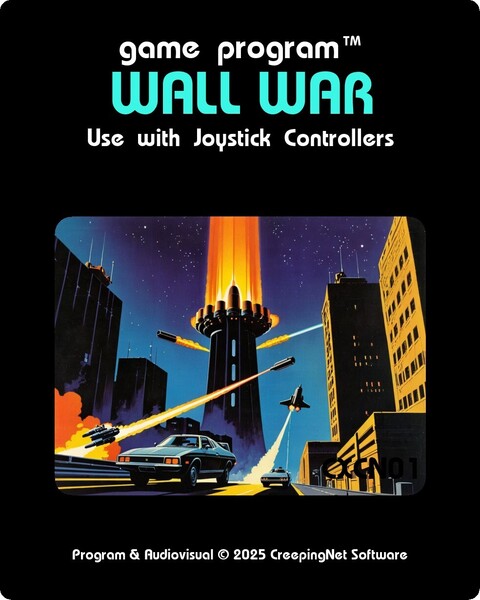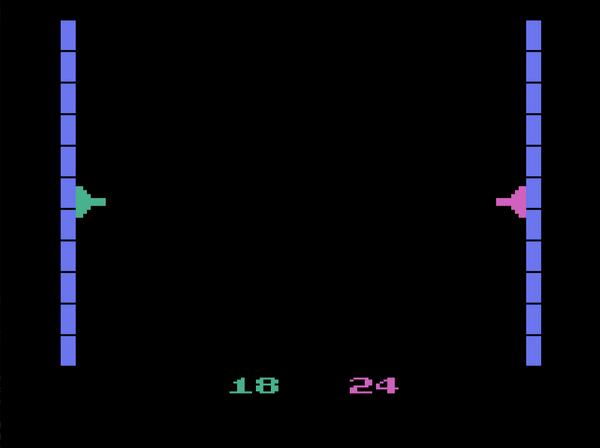WALL WAR


| - CN-2601
- 4K ROM (Tenative)
- 4 Variations
- 1 or 2 Players
- Joystick Controller
Wall War is currently in development and is in working beta status. Currently I'm planning for a 4K ROM release, but may expand the game as I figure more out
| In December 2024 I decided to take another crack at Batari BASIC. Inspired by my total DIY, un-educated approach to making video games, and informed by Atari's own history when Al Alcorn was asked to make a Pong game by Nolan Bushnell in 72' (a simple game they could have in a bar that anyone could play), I wanted to stick to that sort of formula very close to the original 9 release titles for the Atari VCS in September of 1977 (ie Combat, Air-Sea Battle, Video Olympics, etc...those were my primary inspirations). It would make the game easier to develop for my starting out, and allow me to figure out some things on my own without having to constantly be pulling lines of code directly from other people's games. By March 2025 I already have a working 4 level demo/beta with 1 and 2 player games, a fairly decent A.I. (I'm still tweaking it), and some ideas for expansion of the original concept possibly (hence 4K ROM being tenative). My goal with this game was just to make something leisurely that would be simple, fun to play, and a little maniacal. Basically, you play as some crazy guy with a guided missile launcher on the side of the street, fighting another person on the other side with the same. In higher variations, you also have a random "Drone" that flies around slamming into you and your opponent that takes your score down. I guess subconsciously I was tapping into some kind of retro-wavish dystopian future sort of thing. I also had plans for traffic to run down the middle of the screen using randomized Playfield Pixels, but found that took more ROM space, so right now I'm trying to decide whether or not to expand this one further so I can complete having a total of something like....12 variations instead of 4.
|

